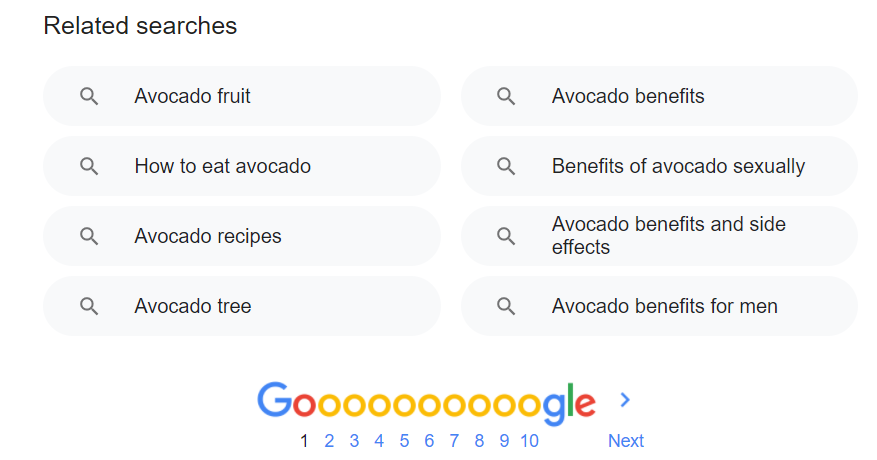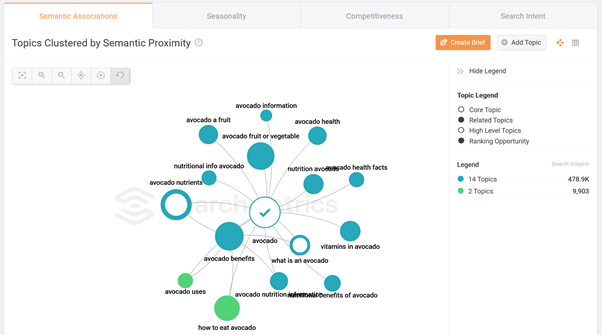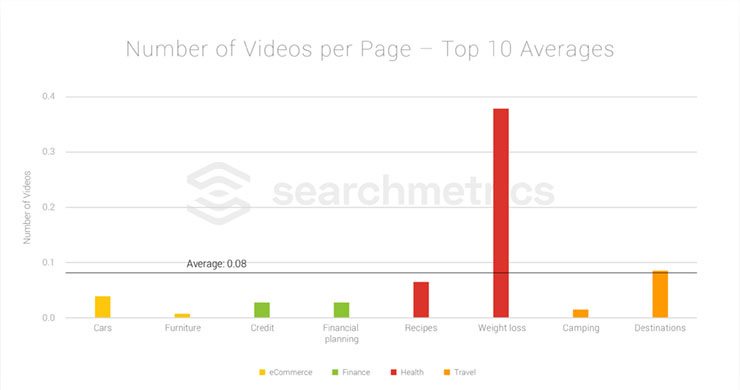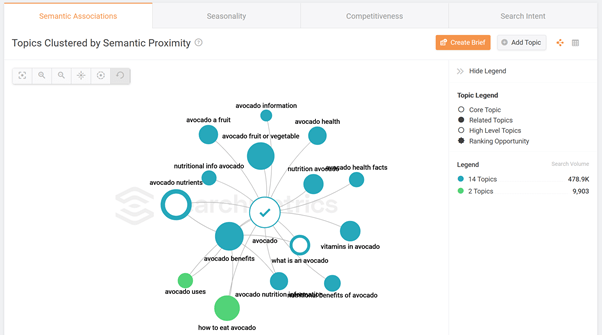Björn Darko, VP Product, Searchmetrics, sets our six ways to use search data in pursuit of content marketing success.
Amid all the talk of the importance of content marketing and the big investment in time and effort that brands throw at content creation, marketers face an enormous barrier to success. Experts estimate that 80% of content on the web receives little or no traffic, which suggests just 1 in 5 pieces of content are likely to be providing any real value.
So, how can marketers ensure their content strategy actually delivers? An important lesson is to use search data and insights to drive the creation and improvement of your content, both to help meet the needs of your target customers and to rank highly in search results.
Why a data-driven approach is vital
Look at the facts. Search engines such as Google have spent years evolving and fine-tuning their algorithms to deliver the most relevant content to meet the needs of billions of searches a day – 365 days a year. Their success depends on having an intimate understanding of what makes good, helpful content for virtually any question a consumer will ask. Why wouldn’t it make perfect sense that marketers should tap into that pool of search data and knowledge to drive their content strategies?
Proper data analysis provides the foundation for a successful content strategy. Here are six ways in which search data can help:
1. Understand your existing content performance
Start by creating an inventory of the main landing pages on your website, analysing how each performs using a mix of free tools such as Google Analytics and Google Search Console, as well as the paid-for tools your SEO team is likely to be using. In addition to user signals (such as impressions, clicks, search traffic to individual pages, time on-site and bounce rates), look at business metrics such as sales and other conversions.
Many SEO platforms provide a visibility score, which provides a helpful way of measuring and comparing the search performance of different web pages. They might use slightly different ways to calculate this index score, but it’s usually centred around how frequently and how highly a page appears in search results for a database of millions of popular keywords. You can also ask your SEO team to give you an analysis of the ‘traffic value’ of your top content pages – i.e. how much it would cost to generate the same level of traffic through paid search ads.
This quantitative data will give you a good picture of which content is delivering, and which needs further work. You should marry it up with a qualitative overview that identifies the content areas you want to focus on given your business and marketing strategy and your target audience/buyer persona research.
2. Use search intent
You know that consumers search with a specific intent, whether that is researching and gathering information (informational); searching with a view to making a purchase (transactional); or looking for a specific website or organisation online (navigational). So, it’s important to analyse the main search queries and keywords that your target audiences use to understand search intent and ensure you create content that closely meets that intent.
Google is getting much better at understanding intent and delivering results that meet it. This means that simply by looking at the content displayed in search results you can work out the likely intent of specific queries. If product listing ads are heavily represented, the search query is likely to be transactional. If search results include Wikipedia, blogs and featured snippets/direct answers, the intent is more informational. If sitelinks come back as the first results, intent is more navigational.
All too often, the main focus of many content strategies is creating transactional, product related content. There’s not enough emphasis on informational content that potential customers need in the early stages of the sales funnel. The chart below on the left illustrates that in a Searchmetrics study of 2,500 product related keywords, over 30% were found to have an informational intent. Yet the chart on the right shows that a typical website only has top 10 rankings for transactional keywords and fails to rank on Google’s first search results page for any informational searches.

So for instance, if you are selling running shoes, it’s important to analyse how much of your content is aimed at capturing top of the funnel visitors (i.e. informational traffic to answer questions like ‘how to start a running programme’ and “do I really need special running trainers?”) versus those who want transactional content such as product content on the specific running shoes you sell. Interestingly, during the strict lockdown period earlier this year when people were furloughed at home with time on their hands, we noticed an uptick in these types of informational searches. People were unsure about making purchases due to economic uncertainties – but wanted to explore different hobbies and areas in which they might make related purchases in future.
Search Engine Optimisation (SEO) Best Practice Guide
3. Analyse topic clusters
Analysing the relevant cluster of topics around your main topics helps you to research and highlight gaps in your content, enabling you to add fresh paragraphs to existing content or to create and link to new landing pages for specific related topics. Studies show that search engines prefer content that covers topics holistically, including answers to the key related questions people might ask about the wider topic
You can get an idea of relevant topic clusters simply by looking at Google’s “Related Searches” box which appears at the bottom of the search engine results page. Below you can see the Related Searches for the term avocado.

And SEO tools can go one step better by giving you a granular analysis of this which you can use to inform your own content strategy (see below).

4. Tailor your content presentation to your vertical or niche
The days of following a generic SEO strategy across every industry are now long gone. Google now better understands the factors that will best satisfy search queries for individual verticals, topics, and niches and this can provide clues about how best to present content for the topics you’re addressing.
So, for example, a Searchmetrics study of content targeting searches related to three very different topics – fitness, wine and divorce – shows that each one has different requirements in terms of presentation.
For fitness-related searches, video content ranks very highly – especially in the first three positions on Google. But video doesn’t feature at all on the first page for searches related to divorce or wine – Google has identified that video content is a very good way of addressing the needs of fitness searchers but not of people wanting to learn about divorce or wines.
With divorce, longer-form text content with more paragraphs appears more frequently in the top search results – probably because it’s a complex subject that requires in-depth explanations. And pages that rank well for divorce tended to use content arranged in lists and tables, which is another way of making complicated content easier to understand.
Similarly, if you analyse the search results for keywords related to furniture high-ranking pages tend to contain more images than those for recipes and divorce. Google knows that people who are searching for furniture usually want to see a selection of images and using this when delivering results.
The chart below shows that the average number of videos in Google first page results for searches related to the niche “weight loss” far exceeds that for a range of other niches. So according Google, just like fitness searchers, people searching for weight loss related topics are more likely to be satisfied by video content.

5. Learn from your search competitors
Next, explore your competitors’ content strategies, remembering that you need to look beyond your direct rivals to include your competitors in search. For example, if you are a car dealer you’ll find that a search such as “buying a car” might bring up pages from finance companies or breakdown organisations, automotive magazines, and car brands themselves as well other dealers. All of these are your competitors in search.
Evaluating the best performing content from search competitors in terms of rankings and search visibility provides useful information on how to prioritise your own content creation and optimisation. What topics do they cover that you are missing? Look in detail at how their main pages are designed from an SEO and content point of view. Analyse their content right down to the small details such as the page titles and meta descriptions they use. Search tools can track the content on your website and give you a list of your top content competitors on Google – so you can very quickly see exactly who’s creating content similar to yours and learn from them.
6. Maximise what you’ve already created
A key part of your strategy should be directed at using data to maximise the potential of good content you already have. Identify the pages that already rank between positions five and 20 for relevant topics and keywords, for example, and work out how you can improve them. If you can do enough to break into the top five positions, it’s highly likely your content is now better suited for both human targets as well as for Google.
Sometimes the task is as simple as ensuring you keep updating existing content with the latest information to ensure it stays relevant. Remember that existing content and pages on a particular topic will already have built up a level of authority, momentum and links which search engines recognise. So, in many cases you’re likely to achieve better search rankings and potentially increase traffic more quickly by making improvements here, than by creating content completely from scratch. That’s why many retailers keep the same sales and promotional pages for Christmas, Easter, Valentine’s day etc and just update them each year with new products and promotions.
Similarly, when creating new content, ensure that your pages are not cannibalising traffic to existing content which may already be ranking. New landing pages on similar topics are often introduced over time, splitting traffic and hurting visibility. Instead look at how you can consolidate pages and delete and redirect the remaining URLs to increase performance.
Finally, of course it is perfectly acceptable to remove pages that your data shows are poorly performing in terms of impressions and clicks – or those are just not part of your business strategy anymore. Sometimes detoxing your content in this way can be enough in itself to boost your site’s search visibility – because it eliminates poor user signals that bad or irrelevant content sends to search engines.
Successful content requires creativity
While data-driven analysis is the foundation of strong content, success also relies on ideas, passion and creativity. Data can inform the topics, format and language, but content creation remains a creative process carried out by humans (although its chances of success increase significantly by taking a data-driven approach). And of course, the process is never over. You need to continually monitor and track the performance of your content based on the metrics you’ve defined and focus on constantly improving it if you are to achieve lasting success.
Content Strategy Best Practice Guide




